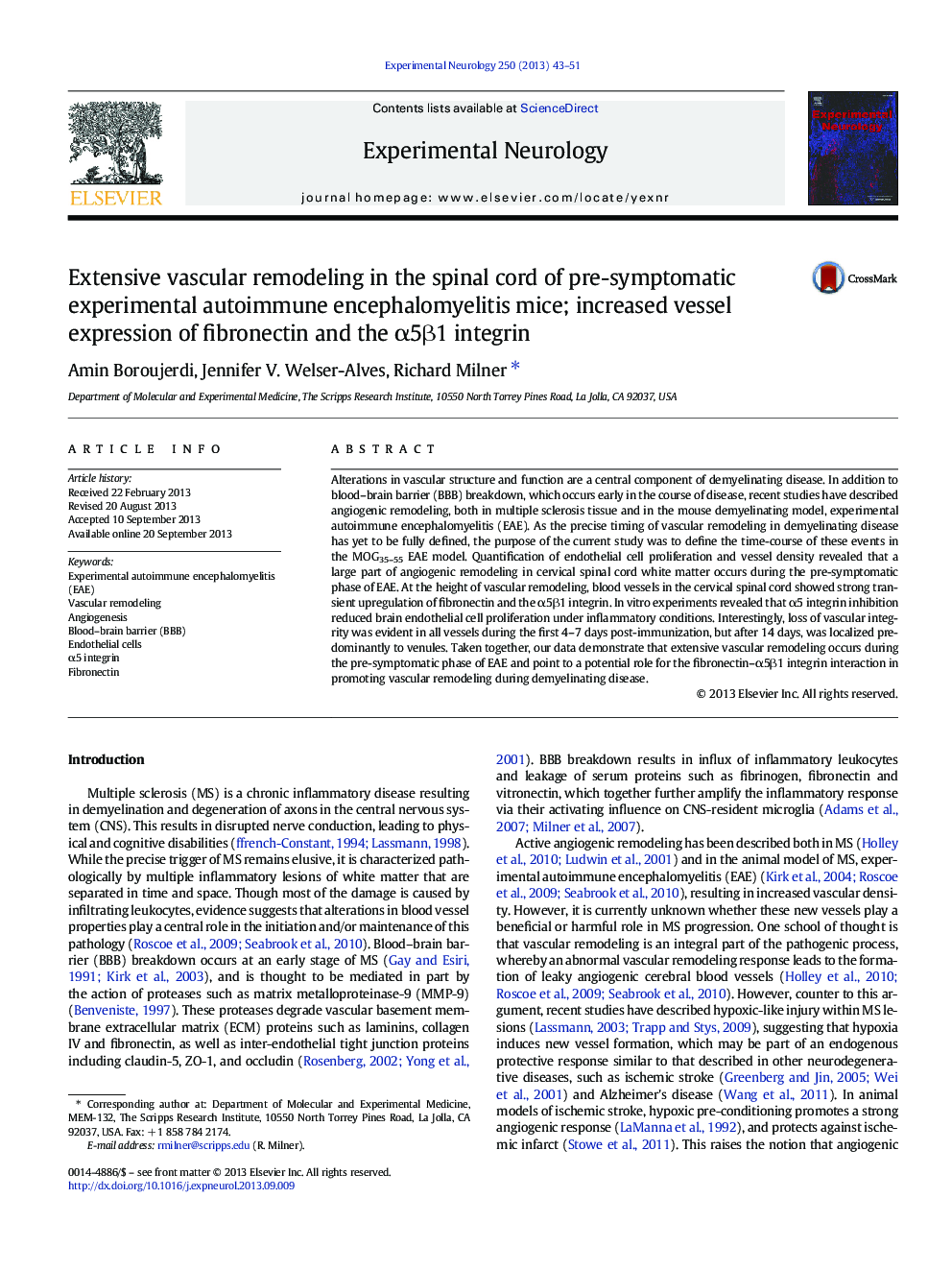| Article ID | Journal | Published Year | Pages | File Type |
|---|---|---|---|---|
| 6017914 | Experimental Neurology | 2013 | 9 Pages |
Abstract
Alterations in vascular structure and function are a central component of demyelinating disease. In addition to blood-brain barrier (BBB) breakdown, which occurs early in the course of disease, recent studies have described angiogenic remodeling, both in multiple sclerosis tissue and in the mouse demyelinating model, experimental autoimmune encephalomyelitis (EAE). As the precise timing of vascular remodeling in demyelinating disease has yet to be fully defined, the purpose of the current study was to define the time-course of these events in the MOG35-55 EAE model. Quantification of endothelial cell proliferation and vessel density revealed that a large part of angiogenic remodeling in cervical spinal cord white matter occurs during the pre-symptomatic phase of EAE. At the height of vascular remodeling, blood vessels in the cervical spinal cord showed strong transient upregulation of fibronectin and the α5β1 integrin. In vitro experiments revealed that α5 integrin inhibition reduced brain endothelial cell proliferation under inflammatory conditions. Interestingly, loss of vascular integrity was evident in all vessels during the first 4-7 days post-immunization, but after 14 days, was localized predominantly to venules. Taken together, our data demonstrate that extensive vascular remodeling occurs during the pre-symptomatic phase of EAE and point to a potential role for the fibronectin-α5β1 integrin interaction in promoting vascular remodeling during demyelinating disease.
Keywords
Related Topics
Life Sciences
Neuroscience
Neurology
Authors
Amin Boroujerdi, Jennifer V. Welser-Alves, Richard Milner,
